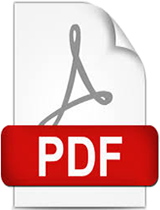
Economic & Sector Work :: Other Environmental Study
Preparing to Manage Natural Hazards and Climate Change Risks in Dakar, Senegal : A Spatial and Institutional Approach
Attachments [ 0 ]
More Details
This report describes a pilot study of natural risk hazards in the peri-urban extension areas of the Dakar Metropolitan Area, Senegal. The area subject of this study stretches across 580 square kilometers, covering less than 1 percent of the national territory, but housing about 50 percent of Senegal's urban population. Much of the rapid population growth of the Dakar Metropolitan Area is taking place beyond the boundaries of the Department of Dakar (the city center), in peri-urban areas that combine two disquieting features: they present significant vulnerability to some natural hazards, and they have unclear administrative and governance arrangements, often being out of the direct oversight of established urban and rural local governments. Situations like this are not unusual in developing countries, and call for more systematic attention to hazard risk management in peri-urban areas, including a better understanding and awareness of the nature of the hazards that they face as well as of the institutional capacities and measures that would be necessary to manage them better. The objective of this pilot study is, therefore, two-pronged. First, the study intends to propose a new methodology for quick assessment of natural hazard risks at a metropolitan region scale, using new tools of spatial analysis based on geographic information systems (GIS) data. Second, the study aims to apply the principles and diagnostic questionnaire of the climate change city primer developed by the East Asia region of the World Bank to get a comprehensive view of the institutional framework for climate change-related hazard risk management existing in the city at this time. Bringing the spatial and the institutional analyses together, the study proposes and starts to develop a number of dissemination and awareness-raising tools that can help to inform different stakeholders about the general parameters of the natural hazard risks facing the Dakar Metropolitan area. The pilot study concludes with a broad action plan for Dakar, to ramp up disaster management practices, as motivation for a stakeholder debate to define subsequently a set of specific and viable actions.
Comments
(Leave your comments here about this item.)